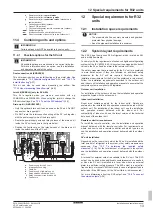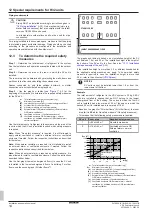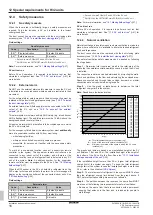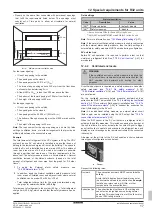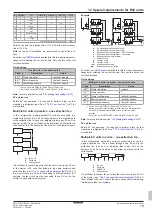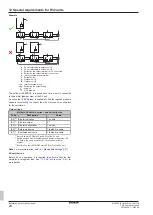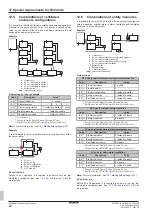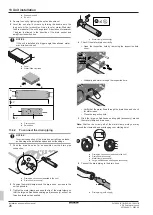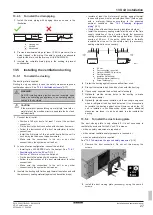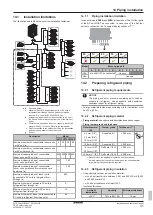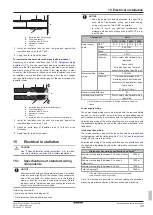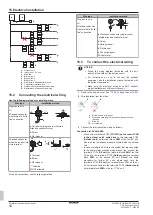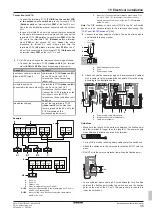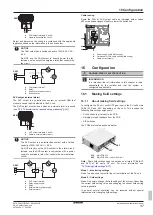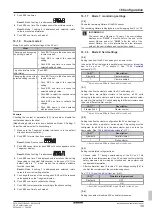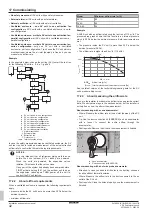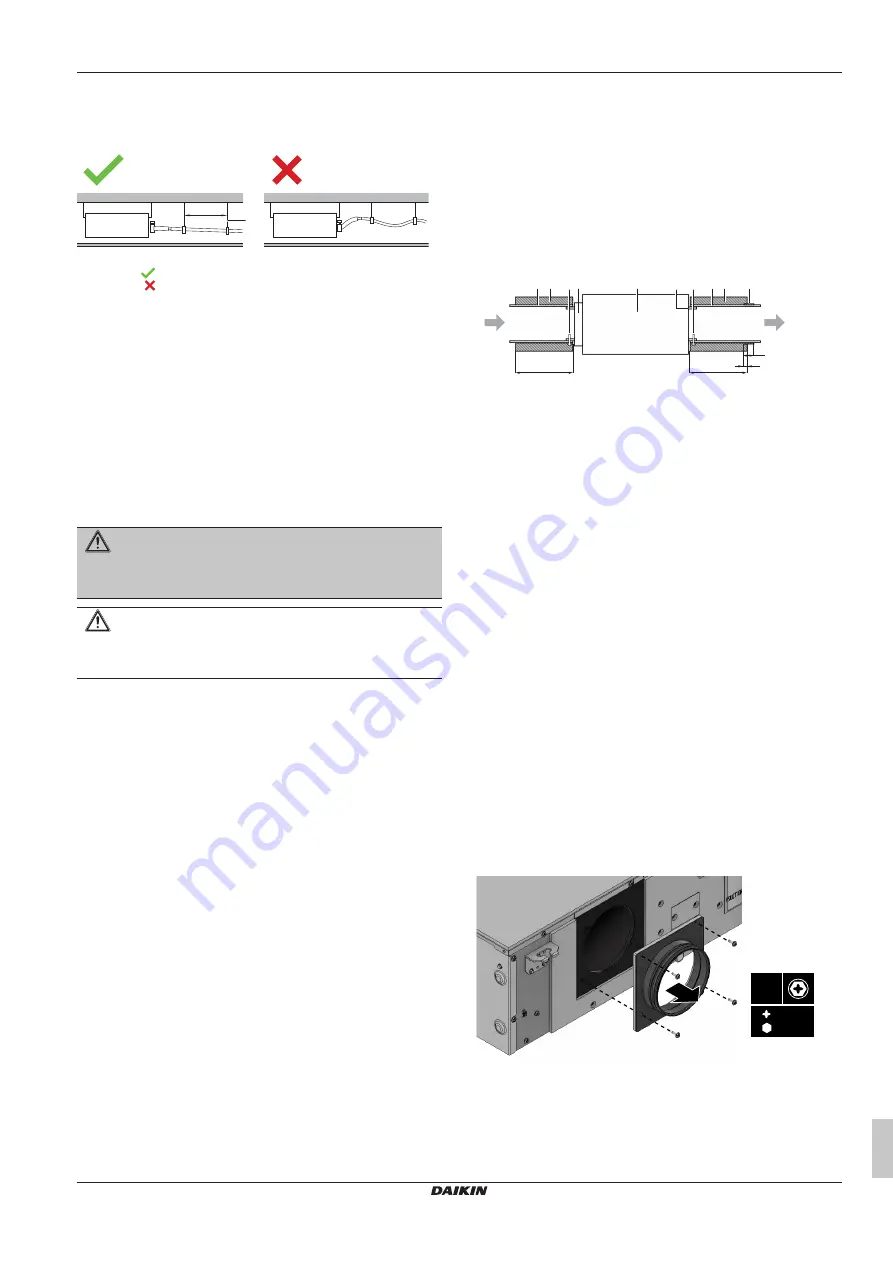
13 Unit installation
Installation and operation manual
27
SV1ASV4~8A14AJV1B
VRV 5 safety valve unit
4P709466-1 – 2023.09
13.4.3
To install the drain piping
1
Install the drain piping with hanging bars as shown in the
illustration.
1~1.5 m
a
a
Hanging bar
Allowed
Not allowed
2
Provide a downwards slope (at least 1/100) to prevent air from
being trapped in the piping. If unable to provide an adequate
slope for the drain, use the drain up kit (K-KDU303KVE).
3
Insulate the complete drain piping in the building to prevent
condensation.
13.5
Installing the ventilation ducting
13.5.1
To install the ducting
The ducting is field supplied.
Ducting is only necessary in case the safety measures require a
ventilated enclosure. See
WARNING
Do NOT install operating ignition sources (example: open
flames, an operating gas appliance or an operating electric
heater) in the ductwork.
CAUTION
If the metal duct passes through a metal lath, wire lath or
metal plate of the wooden structure, separate the duct and
wall electrically.
1
Connect the air outlet.
▪ Position a 160 mm duct of at least 1 m over the unit duct
connection.
▪ Fix the duct to the duct connection with minimum 3 screws.
▪ Follow the instructions of the duct manufacturer for other
connections.
▪ Install the first meter of the air outlet duct after the unit in
such a way that it does not slope downward.
▪ Make sure the connections to the unit or any other
connections in the system do not leak air.
2
In case of series configuration: connect the air inlet.
▪ Install option kit EKBSDCK onto the damper. See
Possible options for the SV unit"
13].
▪ Position a 160 mm duct over the option kit.
▪ Fix the duct to the option kit with minimum 3 screws.
▪ Follow the instructions of the duct manufacturer for other
connections.
▪ Make sure the connections to the unit or any other
connections in the system do not leak air.
3
Insulate the ducting with field supply thermal insulation and with
the accessory sealing material (against condensation drops).
▪ Insulate at least the first meter of ducting against thermal
losses with glass wool or polyethylene foam (field supply)
with a minimum thickness according to the expected
ambient conditions. See
31].
▪ If both sides of the unit have ducting, insulate both sides.
▪ Install the accessory sealing material at the end of the field
supply insulation of the air outlet. Apply the accessory
sealing material under the field supply insulation. Create an
overlap of 50 mm. If the entire outlet duct is thermally
insulated from the unit to the outside wall, the accessory
sealing material is not necessary.
a
d e
d e
f
g
c
g
b
≥
1000
50
250
(mm)
≥
1000
a
SV unit
b
Duct connection (air outlet)
c
Option kit EKBSDCK (air inlet)
d
Duct (field supply)
e
Insulation (field supply)
f
Sealing material (accessory)
g
Screw (field supply)
4
Protect the ducting against reverse airflow from wind.
5
Prevent that animals, debris and dust can enter the ducting.
6
If necessary, separate the duct and wall electrically.
7
Optionally: provide service holes in the ducting to make
maintenance easier.
8
Optionally: provide sound insulation. As the ducting is only used
when a refrigerant leak has been detected, it is not necessary
to insulate the ducting against noise. However, when the SV
unit is installed in sound-sensitive areas where additional
measures are taken, it can be advised to also insulate the
ducting.
13.5.2
To install the duct closing plate
The duct closing plate is only allowed if it is not necessary to
ventilate the enclosure for the SV unit. This means:
▪ when no safety measures are required, or
▪ when natural ventilation safety measure is required, or
▪ when an external alarm is required.
See
"12.3 To determine the required safety measures"
1
Remove the duct connection. Do not not throw away the
screws.
4×
PH2
SW8
2
Install the duct closing plate (accessory) using the same 4
screws.
Summary of Contents for VRV 5
Page 47: ......

